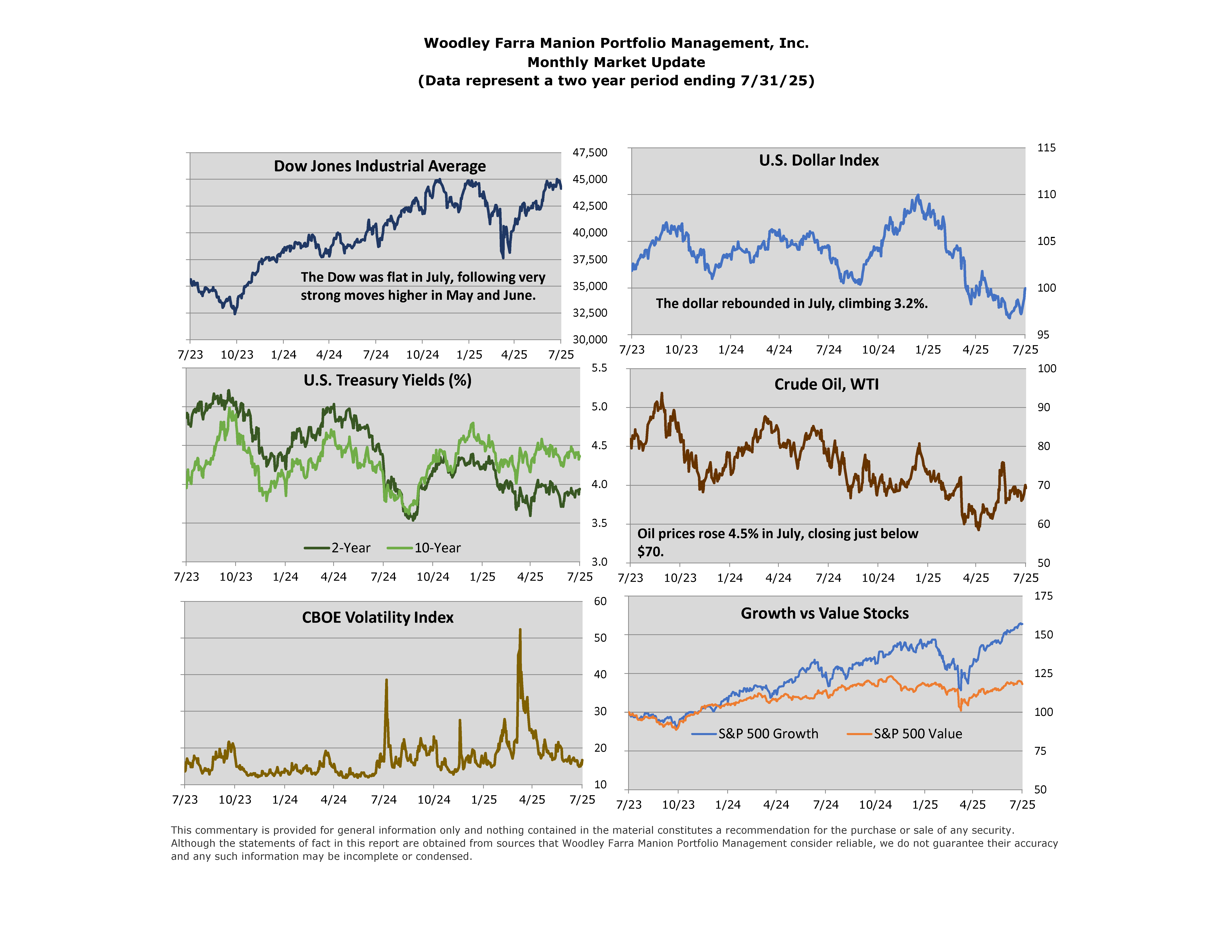
Stocks crept higher through July, with the S&P 500 notching numerous successive all-time highs and closing up 2.2% from the end of June. One driver of the market’s performance was favorable tariff news. Notable trade deals were announced with major U.S. trading partners in July, namely Japan, South Korea, and the European Union. The market also digested the beginning of earnings season. Continuing AI investment propelled tech names while consumer-related companies expressed some caution.
At the end of the month, initial Q2 GDP data came out stronger than economists expected. The annual growth rate of 3% was largely driven by a 5% contribution from net exports (imports – exports), partially offset by a negative contribution from private inventories of -3.2%. This implies U.S. imports slowed as producers used up inventory purchased in advance of tariffs. Economists at the Federal Reserve and investors will closely watch for signs of price increases as producers use up pre-tariff inventories and the higher cost post-tariff inventories flow through to the consumer. The Federal Reserve voted to hold interest rates steady at their July meeting.
The good news is that trade deals with major partners including Japan, South Korea, and the EU provide some clarity on tariff rates going forward. On July 23rd, the White House announced Japanese tariffs would decrease to a baseline of 15%, down from the previously threatened 25% tariff. According to the White House, terms of the Japanese trade deal included a large Japanese investment into the U.S. and pledges to substantially increase imports of U.S. agricultural goods, energy, aerospace & defense goods, and more. Similarly, a trade deal was reached with the EU on July 28th, whereby the EU will make large investments in the U.S. and reduce the baseline tariff to 15%, down from 30%. Some select goods are excluded from tariffs including semiconductor manufacturing equipment and aerospace equipment. The Trump administration did stipulate that 50% tariffs on industrial metals steel, aluminum, and copper will remain. Many nations including China, Canada, and Mexico have yet to finalize a deal, with upcoming deadlines. As of July 30th, The Yale Budget Lab reported the effective U.S. tariff rate as 16.6%, down from 28% in May. Although the latest country-specific tariffs are lower than previously announced, they are significantly higher than at the beginning of the year. The Yale Budget lab estimates tariffs will increase consumer prices (Personal Consumption Expenditures Price Index) by 1.8%
Source: https://budgetlab.yale.edu/research/state-us-tariffs-july-30-2025
